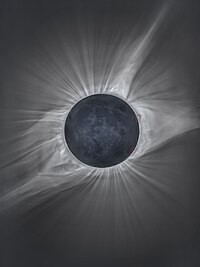
Photo from wikipedia
Recent experiments have observed much higher electron–ion collisional ionization cross sections and rates in dense plasmas than predicted by the current standard atomic collision theory, including the plasma screening effect.… Click to show full abstract
Recent experiments have observed much higher electron–ion collisional ionization cross sections and rates in dense plasmas than predicted by the current standard atomic collision theory, including the plasma screening effect. We suggest that the use of (distorted) plane waves for incident and scattered electrons is not adequate to describe the dissipation that occurs during the ionization event. Random collisions with free electrons and ions in plasma cause electron matter waves to lose their phase, which results in the partial decoherence of incident and scattered electrons. Such a plasma-induced transient spatial localization of the continuum electron states significantly modifies the wave functions of continuum electrons, resulting in a strong enhancement of the electron–ion collisional ionization of ions in plasma compared to isolated ions. Here, we develop a theoretical formulation to calculate the differential and integral cross sections by incorporating the effects of plasma screening and transient spatial localization. The approach is then used to investigate the electron-impact ionization of ions in solid-density magnesium plasma, yielding results that are consistent with experiments. In dense plasma, the correlation of continuum electron energies is modified, and the integral cross sections and rates increase considerably. For the ionization of Mg9+e+1s22s2S→1s21S+2e, the ionization cross sections increase several-fold, and the rates increase by one order of magnitude. Our findings provide new insight into collisional ionization and three-body recombination and may aid investigations of the transport properties and nonequilibrium evolution of dense plasma.
Journal Title: International Journal of Molecular Sciences
Year Published: 2022
Link to full text (if available)
Share on Social Media: Sign Up to like & get
recommendations!